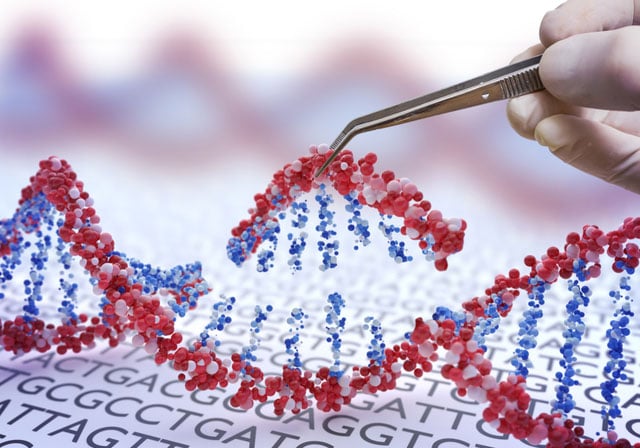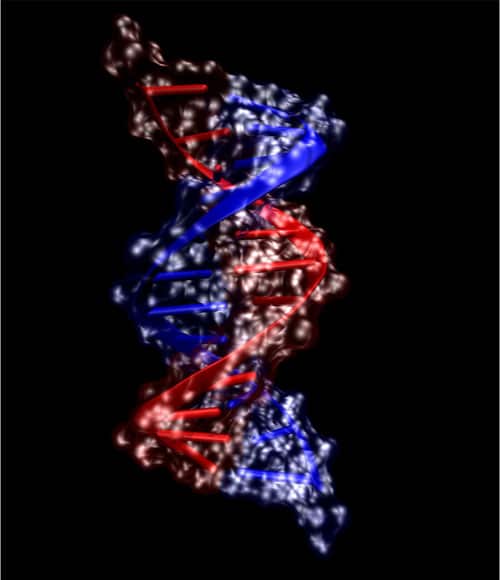
Gene Therapy: Is This The Future of Medicine & Curing Diseases?
An Introduction To Gene Therapy
Gene Therapy was first introduced in 1972 with a paper titled ‘Gene Therapy For Human Genetic Disease?’ published in Science by US composed by Theodore Friedmann and Richard Roblin. This outlined the potential for incorporating DNA sequences into a patient in hopes of curing genetic disorders. This introduction followed 18 years of research until on September 14, 1990, the first ever approved gene therapy produced was performed on a four-year-old girl named Ashanthi de Silva. She was born with severe combined immunodeficiency and the procedure was done by W. French Anderson and his colleagues at NIH. This was the first successful procedure that pathed the way for gene therapy as a legitimate technique used to treat and prevent diseases.
Gene therapy is an experimental technique that is designed to introduce genetic material to cells to compensate for abnormal genes or to create missing beneficial proteins. Though a gene that is injected directly into a cell does not function, a carrier called a vector was engineered to deliver the gene, either through injection or IV, by infecting the cell. This technique can allow doctors to treat different diseases and disorders by inserting a gene into the patient’s cells instead of using drugs or resorting to surgery. This can be done several ways such as replacing a mutated gene with a healthy version, inactivating a mutated gene, making the mutated gene more evident so their immune system can identify and attack it or introducing a new gene entirely to help combat disease.
Gene therapy has not had a smooth path in the scientific community. Many scholars doubted the legitimacy and potential of this technique and the doubts grew rapidly with the first death after a gene therapy trial in 1999. This incident eventually led to the closure of the University of Pennsylvania’s gene therapy program which was one of the largest in the world and launched an additional 69 individual investigations of other gene therapy trials. It took almost four years to even begin it’s rebound to the path of being a reputable treatment option for diseases and disorders with no other viable cures.
Diseases/Disorders That Could Be Treated by Gene Therapy
● Cancer
● Cystic Fibrosis
● Adenosine Deaminase Deficiency
● Heart Disease
● Diabetes
● Hemophilia
● AIDS
● Immunodeficiency Syndrome
● Leber Congenital Amaurosis
● Blood Disorders
● Neurological Disorders
● Musculoskeletal Disorders
● Retinal Disorders
● Oncological Disorders
● Inherited blindness

A New Hope For Gene Therapy
Initially, gene therapy was reintroduced in China in 2003 and then in Russia in 2011. These two trials set the path for an incredible boom in gene therapy that the United States quickly followed. After the first initial wave of gene therapy approval between the years 2003 and 2012 in addition to the significant advancements made in the vector technologies, the pace of gene therapy trial approvals rapidly picked up. In fact, the FDA predicts that the approval rate will grow to 10-20 annually by 2025.
2017 was set as a groundbreaking year for gene therapy due to multiple successful trials. These trials include a boy from France who was cured of Sickle Cell Disease after receiving treatment from Bluebird Bio. In the same year, two treatments were approved by the FDA to fight rare types of cancer. In Germany, a boy with a bacterial infection and a connective tissue disorder was grafted new skin with gene therapy, scientists accomplished this by extracting cells from a part of the boy’s body that was not blistered yet. In December of 2017, the FDA approved the first gene therapy treatment called Luxturna that corrects the mutation that is responsible for a range of retinal diseases. In that same month, BioMarin, a company that is working with gene therapy, published early clinical trials showing that nine patients saw substantial blood-clotting proteins that are missing with hemophilia.
Even with the amazing strides accomplished in recent years, researchers still must overcome challenges such as finding better ways to deliver genes, avoiding disrupting other gene’s functions, and targeting specific cells. On a more positive note, gene therapy on average results in an increase of life expectancy by anywhere from 5 to 15 years. Gene therapies also gives individuals the option to opt out of invasive surgeries or daily disease management life plans and it typically takes around only 10 months to complete a trial. Incredibly, as of 2021, there are currently 21 FDA approved gene therapies:
1. ABECMA (idecabtagene vicleucel)
Celgene Corporation, a Bristol-Myers Squibb Company
2. ALLOCORD (HPC, Cord Blood)
SSM Cardinal Glennon Children’s Medical Center
3. BREYANZI
Juno Therapeutics, Inc., a Bristol-Myers Squibb Company
4. CLEVECORD (HPC Cord Blood)
Cleveland Cord Blood Center
5. Ducord, HPC Cord Blood
Duke University School of Medicine
6. GINTUIT (Allogeneic Cultured Keratinocytes and Fibroblasts in Bovine Collagen)
Organogenesis Incorporated
7. HEMACORD (HPC, cord blood)
New York Blood Center
8. HPC, Cord Blood
Clinimmune Labs, University of Colorado Cord Blood Bank
9. HPC, Cord Blood – MD Anderson Cord Blood Bank
MD Anderson Cord Blood Bank
10. HPC, Cord Blood – LifeSouth
LifeSouth Community Blood Centers, Inc.
11. HPC, Cord Blood – Bloodworks
Bloodworks
12. IMLYGIC (talimogene laherparepvec)
BioVex, Inc., a subsidiary of Amgen Inc.
13. KYMRIAH (tisagenlecleucel)
Novartis Pharmaceuticals Corporation
14. LAVIV (Azficel-T)
Fibrocell Technologies
15. LUXTURNA
Spark Therapeutics, Inc.
16. MACI (Autologous Cultured Chondrocytes on a Porcine Collagen Membrane)
Vericel Corp.
17. PROVENGE (sipuleucel-T)
Dendreon Corp.
18. STRATAGRAFT
Stratatech Corporation
19. TECARTUS (brexucabtagene autoleucel)
Kite Pharma, Inc.
20. YESCARTA (axicabtagene ciloleucel)
Kite Pharma, Incorporated
21. ZOLGENSMA (onasemnogene abeparvovec-xioi)
AveXis, Inc.
While gene therapy is not yet considered a primary treatment option and still must overcome technical challenges, it is continually gaining momentum within the scientific community. The FDA itself is committed to helping the development of these innovative treatments. In addition, there are research and technical advancements happening regularly. As technology grows so do the possibilities to discover the best vector delivery systems, expand the ability to correct rare genetic disorders and cure currently incurable diseases. Gene therapy holds a promise to transform medicine and become a real medical reality offering a new hope to people worldwide.



